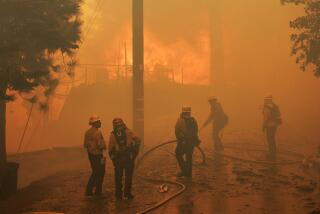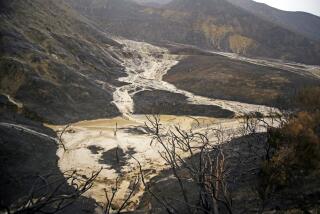After staggering losses in California firestorm, officials expect state’s largest debris-removal effort ever
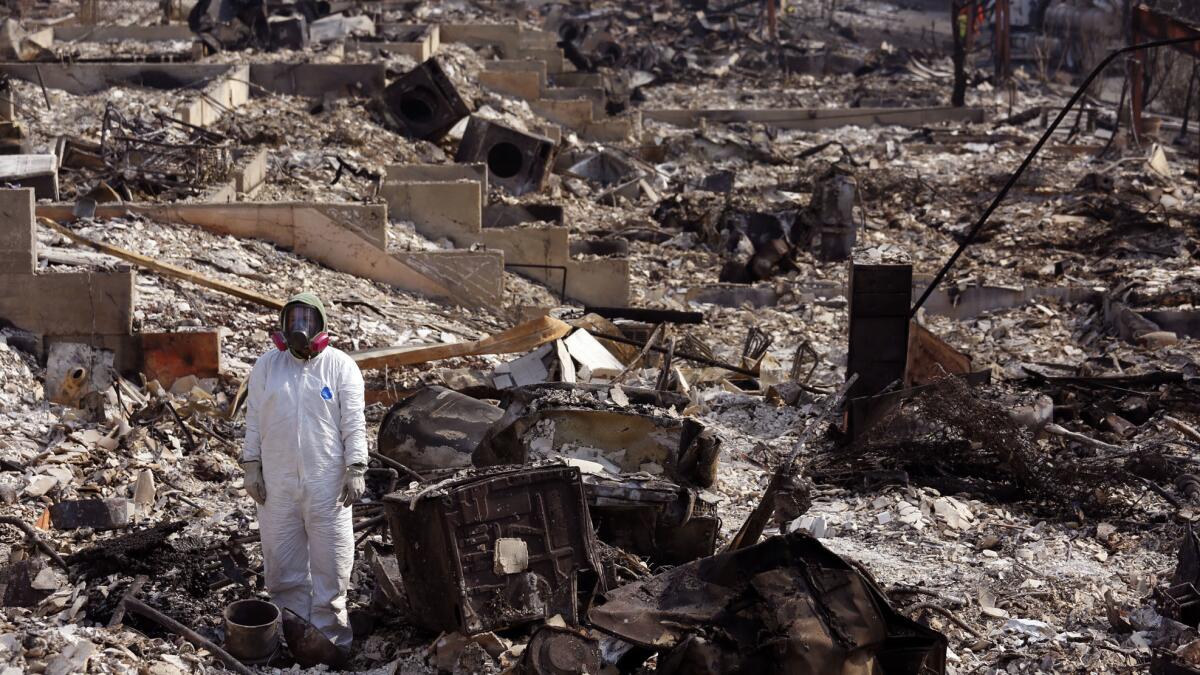
Reporting from SANTA ROSA, Calif. — With more than 5,500 homes destroyed across Northern California wine country in wildfires, the staggering level of loss can be defined by the personal items that residents lost.
Incinerated photos and personal papers. Jewelry that melted away. Refrigerators, washers and dryers burned black.
Residents have made a grim pilgrimage in recent days back to their devastated neighborhoods to examine the destruction for themselves and see if anything is salvageable.
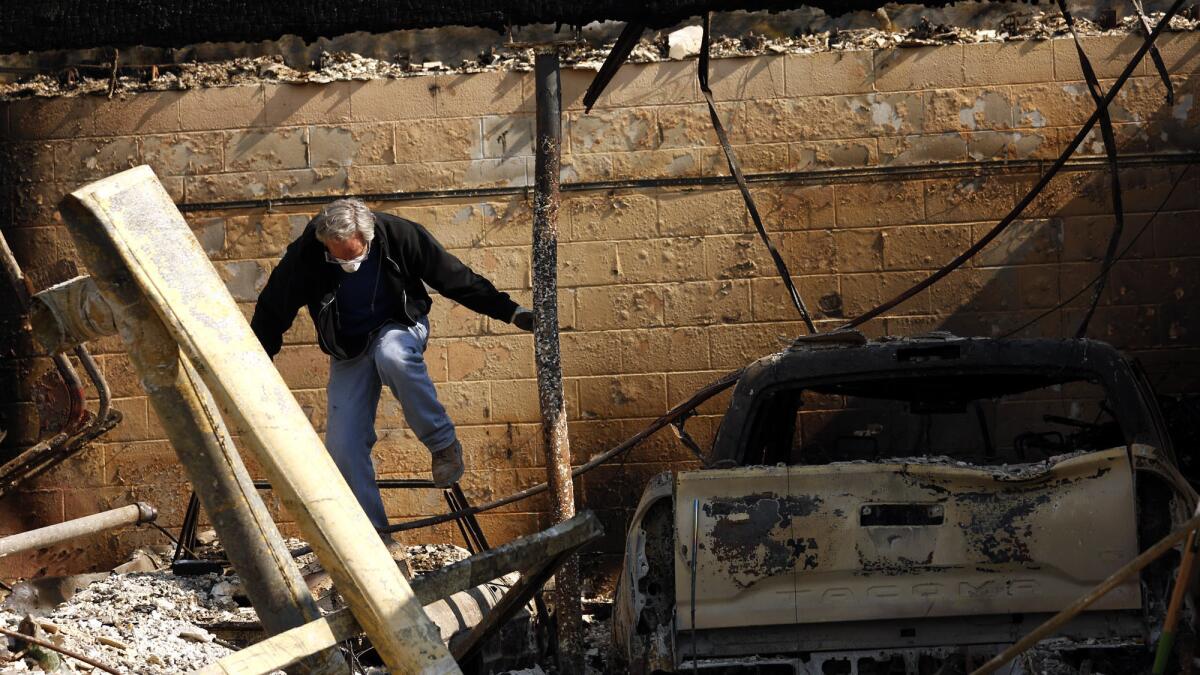
But authorities are now shifting to what will be one of the pressing tasks in the long recovery effort: clearing out those neighborhoods.
They say that one of Northern California’s worst wildfire disasters is transitioning into the largest debris-removal campaign in state history.
State Sen. Mike McGuire (D-Healdsburg) said details of the massive cleanup effort that’s expected to cost more than $100 million will be provided at town hall meetings throughout the region over the next several days.
The Federal Emergency Management Agency will fund 75% of the effort, with the rest paid for by the state Governor’s Office of Emergency Services, officials said.
“We were at war with ferocious wildfires across hundreds of square miles,” McGuire said in an interview in his Santa Rosa office. “Now, state, federal and local agencies are coordinating a colossal cleanup in order to start rebuilding the charred heart of this beloved region.”
“Our focus is on helping people get back into homes — and back to work,” he said. “We’ve lost 5,000 jobs, most of them in service industries.”
With evacuation orders being lifted, a small army of insurance adjusters and crews certified to haul hazardous and carcinogenic materials such as lead and asbestos will start assessing property losses later this week, on a lot-by-lot basis, officials said.
Within two months, fleets of contracted bulldozers, dump trucks and water tenders will replace fire engines, utility trucks and emergency response vehicles still crowding local freeways, streets and narrow country lanes in Sonoma and Napa counties, Sean Smith, state debris removal coordinator, said Wednesday.
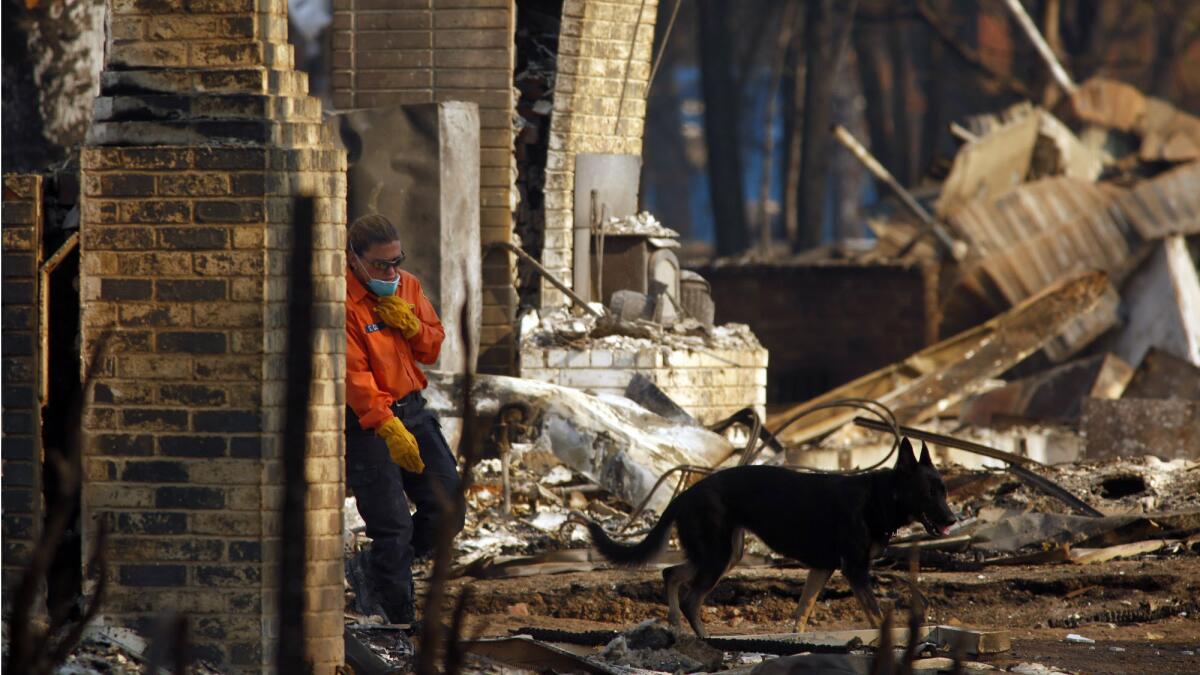
“The debris stream will be going to many different landfills,” Smith said, “depending on the toxicity of the substances they contain.”
“But all of it will be hauled to landfills within the state,” he added.
In an effort to expedite reconstruction, local community leaders are calling on county officials and state and federal regulatory agencies to relax building permit requirements and environmental rules such as a mandatory 10-day notice before removing debris laden with asbestos.
Even then, however, the job of collecting samples of ash and testing them for the presence of hazardous materials won’t be easy.
“I suspect that recovery will proceed piecemeal when it comes to residential lots and commercial property,” said Chip Prokop, president of Petaluma-based Air and Water Sciences, a consulting firm that assists insurance adjusters. “That’s because every property is different. Some may be laden with asbestos. Others may have propane tanks that didn’t explode in wildfires but now could go off with a little jostling.”
This week, residents returned to Journey’s End mobile home park in Santa Rosa to see what could be salvaged.
The park was devastated by the fire — which destroyed an estimated 5% of Santa Rosa’s housing stock and killed more than 40 across wine country — and there was not much that many residents could find.
Jeff Moroni, 55, had come back to see what he could collect of his mother’s belongings. His mother had kept a few of her husband’s prized possessions, including an antique bathtub he had turned into a flower planter and a collection of Morgan silver dollars, old pennies and nickels he had been building his whole life.
On Tuesday, Moroni retrieved the safe holding the collection and, back at his van, opened it. The coins were still there, but all of the accompanying paperwork was burnt to a crisp.
“Now I just gotta figure out how to go through it all and clean it,” he said.
He also debated whether to salvage a wheelbarrow in which his dad had tugged him along as a child growing up in San Mateo.
“Maybe I could restore it,” he said.
It remains to be seen, however, how the relief efforts can resolve Holly Michaels’ fire-related predicament.
“My home is still standing, but it’s not livable because it’s filled with smoke and ash,” Michaels, 76, said. “In the meantime, I’m living with my ex-husband and the woman he’s been dating for years.”
“I’ve got the couch, of course,” she added with a chuckle. “But I know we’re going to get through this because we must, and because, in our own peculiar way, we’re family.”
Times staff writer Nina Agrawal contributed to this report.
More to Read
Sign up for Essential California
The most important California stories and recommendations in your inbox every morning.
You may occasionally receive promotional content from the Los Angeles Times.

